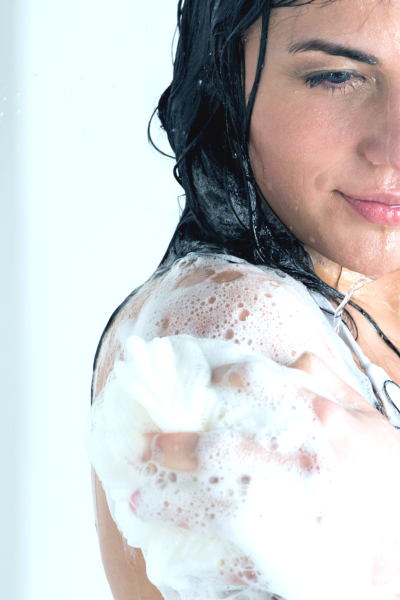 Plastic Microbeads in Cosmetics
Plastic Microbeads in Cosmetics
Plastic Microbeads in cosmetics and personal care products are everywhere and the news isn’t good.
Some popular cosmetic and skincare brands using Microbeads in their products are currently under fire from environmentalists, natural health advocates and worried consumers.
The reason is this…
Scientific studies have recently found that these plastic microbeads are polluting our planet’s lakes, seas and oceans. They are poisoning the creatures that live in them and this in turn, may be negatively affecting our own health.
Environmental studies have unearthed this not so surprising fact – that the billions upon trillions of plastic Microbeads in cosmetics that are being washed out into the earths waterways, are having some very serious repercussions!
What Are Microbeads in Cosmetics Made From?
Cosmetic Microbeads are tiny plastic beads that are made usually from Polyetheylene plastic, but they can also be made from out of; Polypropylene, Polymethyl Methacrylate , Polyethylene Terephthalate and Nylon.
They range in size, with the 1mm diameter Microbeads being the most commonly used size for cosmetics and personal care products. Some Microbeads are so tiny that the human eye can only see them under a microscope.
Until recently, cosmetic manufacturers were happily splashing slogans across their products such as this one;- “Contains Skin Refining Microbeads”. Advertising a product with the addition of Microbeads was a very clever marketing tool. It enticed the consumers into buying a product that sounded as if it had a technologically advanced edge over other beauty products. The fancy word “Microbeads” gave consumers the illusion of the product being able to produce fantastic results.
We now know that this is not the case!
While the types of plastics used to manufacture Microbeads are generally considered less harmful and more inert than their toxic plastic cousins, PVC and Poly-carbonate, and these plastics can be recycled when used for food and drink containers, they certainly are not recyclable when manufactured into these tiny Microbeads.
Cosmetic Microbeads, don’t biodegrade! Microbeads actually accumulate toxins and are seriously damaging the environment!
Why are Plastic Microbeads Put Into Cosmetics & Personal Care Products
Plastic beads, aka “Microbeads”, are used as a synthetic, petrochemical based alternative to natural exfoliates, such as salt, ground walnut and apricot shells.
As Microbeads are perfectly round, cosmetic manufacturers found them to be a much cheaper and easier alternative than using costly natural ingredients, which then have to be refined into a gentle, soft-edged natural exfoliant granule.
FACTS- Sometime Microbeads are added to cosmetics purely for decorative purposes and serve no real function at all; e.g pretty coloured beads added to shampoos and skin lotions.
Cosmetic Products That May Contain Plastic Microbeads
- skin exfoliates
- toothpastes
- face wash
- body wash
- shampoo
- anti-aging makeup
- lip-gloss
- nail-polish
How Microbeads are Polluting The Environment
When you use a cosmetic product containing Microbeads you also ultimately end up washing this product off your body. The removed product then goes down the drain and is small enough to pass through the filtration systems that the water treatment plants use. From there the Microbeads simply flow out into our waterways and oceans, where unknowingly, marine life, including coral, shellfish and fish consume them.
*Coral has been found to have starved to death on a diet of plastic Microbeads and consuming these plastic beads is toxic to many fish.
Micro, plastic beads are so tiny and entering our seas and oceans in such huge amounts that they are literally been found in oceans and seas all around the world.
The Issue of Microbeads and Persistent Organic Pollutants
Plastic Microbeads are a literal magnet for Persistent Organic Pollutants, or what are known as POP’s.
POP’s are toxic chemicals that are very long lasting; e.g flame retardants, plasticizes, pesticides and other poisons.
The tiny plastic Microbeads absorb huge amounts of POP’s in relation to their size and these are then being consumed by marine life.
Beat the Microbead is a great campaign working towards getting a ban placed on the use of Microbeads in beauty products. They have a comprehensive, world-wide products list of cosmetic companies who ARE using Microbeads and those that ARE NOT using Microbeads.
Why Microbeads in Cosmetics Are Dangerous To Our Health
When we eat fish and other marine animals that are polluted with Microbeads, then we too are ingesting not only the plastic, but all the attached POP’s that come along with them.
Dentists have also reported inflammation and infection from the tiny plastic Microbeads being used in toothpastes becoming entrapped under their patients gum line.
How To Avoid Microbeads
Read the fine print on the labels of ALL beauty products before you buy and follow the list and support the work done by Beat the Microbead .
Please also remember that not all the companies listed in the green section of Beat the Microbead’s list are listed cruelty free companies. Double check the green companies cruelty-free status be seeing if they have sought out independent 3rd party approval by Cruelty Free International and their Leaping Bunny Programme
References
The Story Of Stuff Project – Plastic Microbeads
DAVID SUZUKI FOUNDATION- Microbeads
Before you leave, if you enjoyed this article sign up to LivingSafe and stay informed! LivingSafe helping you live healthier & safer.
Mineral Makeup Benefits vs Conventional Makeup
Applying Mineral Makeup Professionally Is Easy
Synthetic Perfumes Making Us Sick
Animal Testing Of Cosmetics Do Your Part To Stop It
Hair Colouring How Safe Is It?
Formaldehyde in Hair Straightening and Hair Styling Products
Fake Tan Risks & Dangers What You Should Know
Browse more helpful articles in my Personal Care section here.
Leave a Reply
You must be logged in to post a comment.